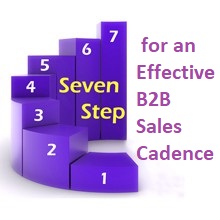
Last time, we discussed the difference between Multi-channel and Omnichannel sales and what it means and why more B2B businesses are putting it into practice. Now that you’ve (hopefully) identified your channels, now it’s time to develop the communication to prospects with a sales cadence.
What is a Sales Cadence, Why Is It Important?
A sales cadence is a series of communications in order to educate a single or multiple message to an identified prospect. The series of communications can include email, calling, social media to name a few.
A sales cadence is critical to fully vet a sales lead or prospect. Many times, a sales rep will receive a sales lead and reach out either by email or calling. If the prospect does not answer the phone or respond by email within a week or two, the sales rep moves on to the next sales lead. Although understandable, missed opportunities is the norm.
That’s where a defined sales cadence can make a difference.
- List Development/ Customer Profile
Your list should consist of past sales leads, your LinkedIn list, current customer list and any list that you may have purchased over the past couple of years. To begin, validate the list. It would be best to send an email to a valid email address so you can get accurate results. There’s a software product called Neverbounce.com that validates email addresses or use a similar product. Remove any non-valid contacts.
Whatever you do, be sure you make a column in your list with the lead source. This will help you identify which channel is producing sales leads and which ones are not. If there’s a channel that is not producing, it just may need adjusting, not a complete elimination.
- Identify Channels of Communication
As there are multiple channels to choose from, in our industry, we’re going to focus on email, LinkedIn and phone calling.
eMail continues to be a very popular form of communication. Although we have become reliant on email as our only means of communication, we need to remember, this is just a single channel that may go through to their inbox, but it may also go to their spam, junk or depending on the company’s firewall, not at all. We will use this channel however; we need to use other’s as well.
LinkedIn is a social media platform with a B2B focus. If you have not opened a LinkedIn account, LinkedIn have may already started one for you. Go to LinkedIn.com and search for your name if you’re not sure if you have an account started or if the account was generated by LinkedIn.
Phone calling efforts continues to be a tried a true means of communication. Be sure you have a good mobile phone with WIFI connection, especially if you are making calls from home.
- Contact Attempts
The number of times to contact a prospect before reaching a response continues to climb. The number of attempts is between 8 and 12. To keep the number on the low side, you’ll need to touch them from all three channels we discussed multiple times. And…not all in one day.
- When to Send Attempts
Spacing out the communications is important as you want them to remember your message in a positive way. Let’s say you received a sales lead. The first attempt is to call and try to connect. If you do not connect with the sales lead, then you can leave a voice mail message. It will also be okay to send an email letting them know you called and why. At this point, give it a couple of days.
A couple of days in between communications is best. We need to give the contact person an opportunity to read the communication and digest the content.
- Length of Time to Roll Out and Complete the Cadence
So now you ask, if I’m sending a communication every couple of days, for how long does this go on? If the person you are trying to contact DOES NOT answer any of the communications, zero response, then continue it for 3-4 weeks. If you continue to receive no response through phone calls, emails, voice mails and LinkedIn, then take them off the list.
However, this doesn’t mean to never contact them again. The timing may be off. Try it again in about 4-6 months and use the same cadence phone call, voice mail, email and LinkedIn again. This may result in a few more opportunities as the timing was right.
- Message – What are You Saying
In many of our blog posts, we have discussed personalization. This is not a new concept, so be sure to include the persons name and company name.
To develop your message, answer a couple of questions:
- Why are you reaching out? Yes, it’s to sell them something, but how can the benefit? You’re there to help them achieve something…get better at something and save money, gain efficiency and productivity. Now you get to explain how.
- And, be sure to include a couple of examples. Do you have a customer they can relate to? By industry such as food processing, manufacturing, distribution center etc. Use resources such as case studies, blog articles and videos to explain or show the ‘proof’.
Implement, Test & Adjust
You’ve gone through all of these steps and you’re ready to go. You begin to implement the cadence and you received a few sales leads. Maybe you discover they weren’t exactly the right ones. Make some adjustments. Now that you have a better understanding how the information is being understood, change or edit the content to better represent your target.
If you keep testing and adjusting the content, your chances of relating to the prospect will continue to evolve and get better and better.
Summary
Developing a sales cadence takes time to initially create. However, it is a process that can help you to maximize sales leads from SalesLeads’ Project Reports, website leads, calling effort leads and anything else marketing is helping to generate interest in the marketplace. Once it’s done, all you need to do is make adjustments.
What to learn more? Get in Touch
Latest Posts
-
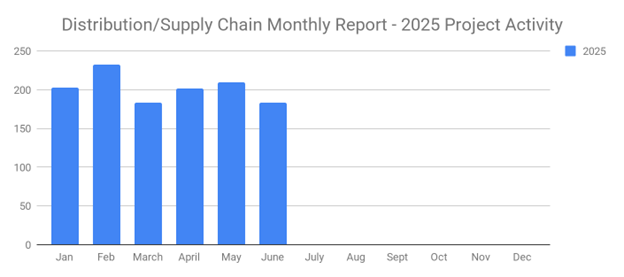
June's New Distribution and Supply Chain Planned Projects Return to March’s 183 Confirmed Figure
-
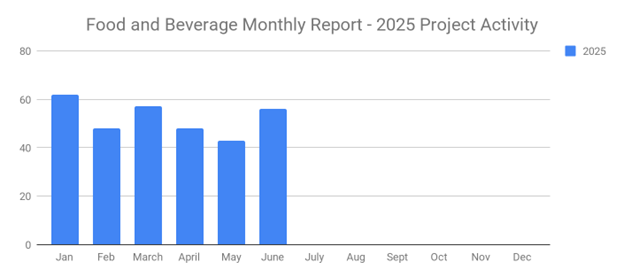
Food and Beverage Rebounds with 56 New Planned Projects Igniting Growth After Decline
-
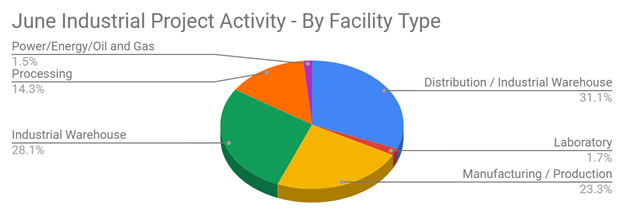
June 2025’s New Industrial Construction Projects Grew 7% Month-Over-Month
-
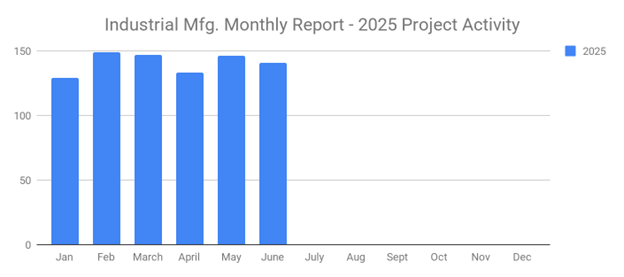
Q2 Industrial Manufacturing Soars 31% for Planned Projects Over $100M; June Planned Industrial Projects Hit 141

